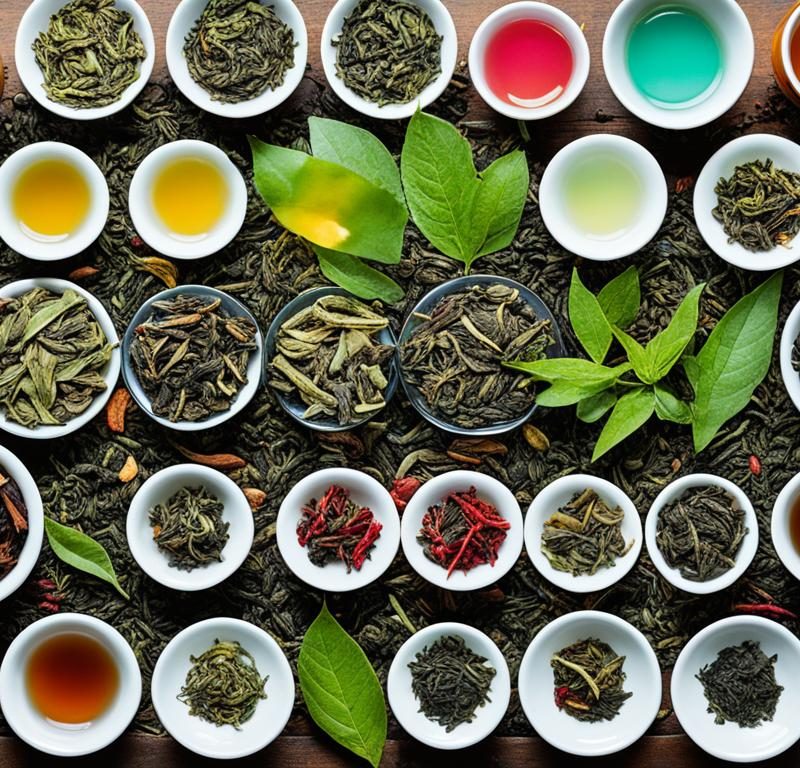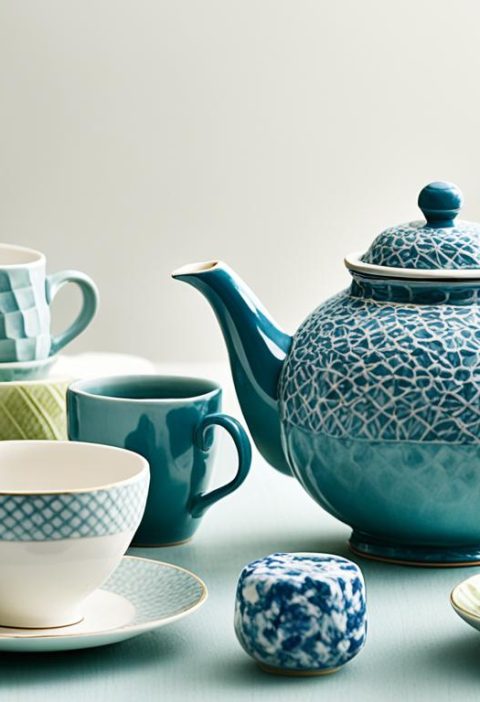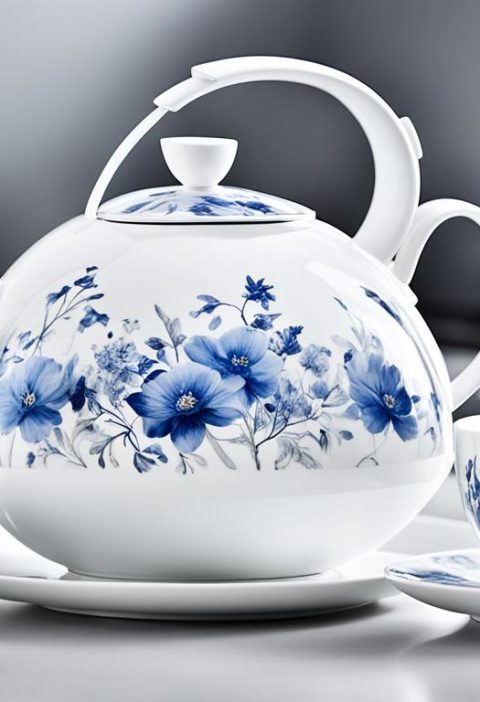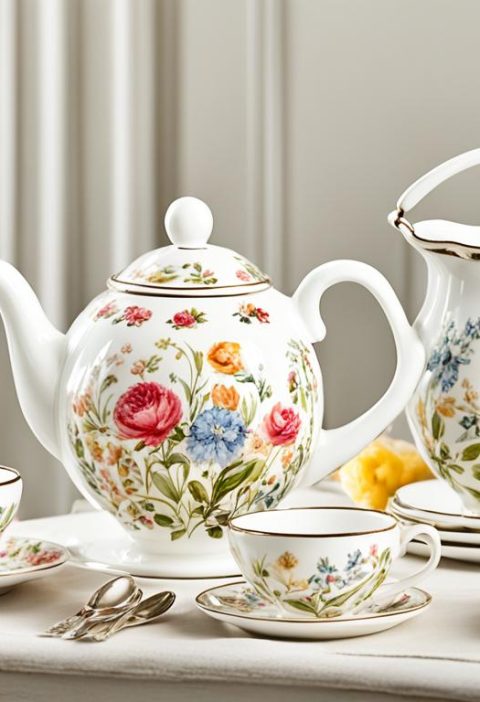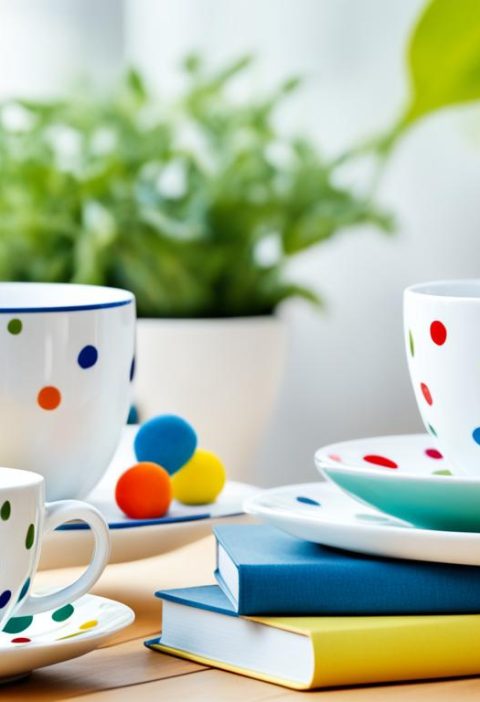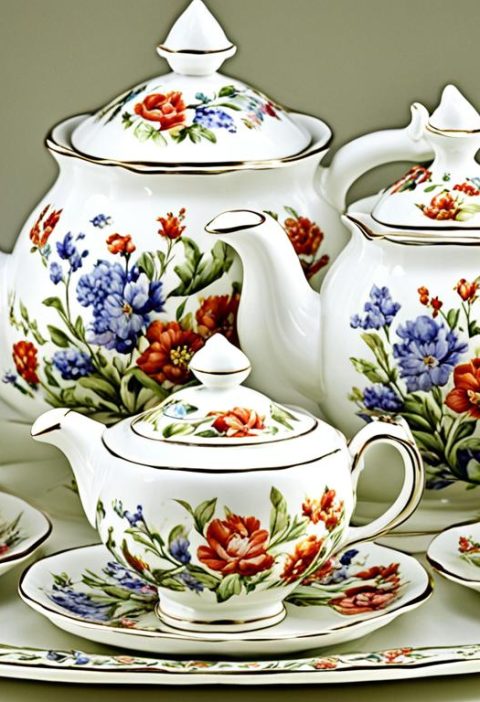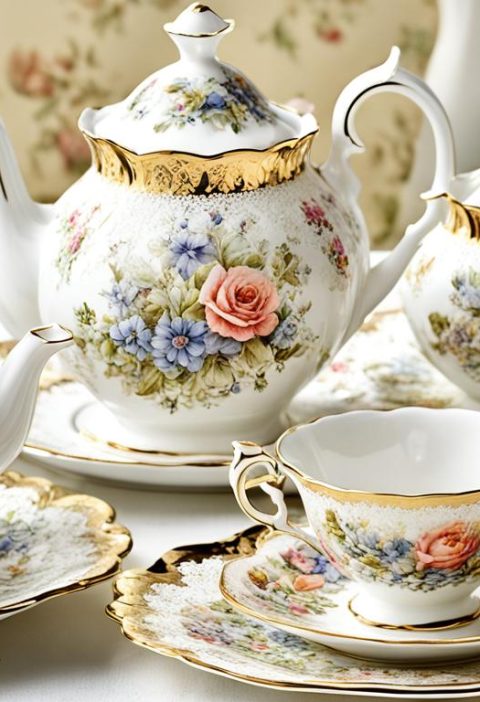Stainless steel tea sets are a popular choice for many tea enthusiasts. But do they actually impact the taste of the tea? In this article, we will explore the influence of stainless steel tea sets on the flavor of your brew.
Although tea taste can be affected by various factors, such as teapot material, brewing process, water quality, and tea leaves, the material of the teapot is just one of many factors that contribute to the overall flavor profile of the tea. Stainless steel teapots have the potential to retain heat well, allowing for better extraction of flavor from the tea leaves. However, oxidation and the mineral content of stainless steel can introduce a metallic or bitter taste to the tea.
When comparing stainless steel tea sets to other popular materials like ceramic, porcelain, clay, and glass, it’s important to consider their unique characteristics. While ceramic and glass teapots are known for preserving the flavor and aroma of the tea, stainless steel teapots may have a minimal effect on the taste of the tea. The best teapot material for tea taste ultimately depends on personal preference, tea variety, brewing style, and budget.
In conclusion, while stainless steel tea sets may have a minimal effect on the taste of the tea, they do not offer the same flavor-enhancing properties as ceramic or glass teapots. The choice of teapot material ultimately comes down to personal preference and the desired tea brewing experience. Experimenting with different teapot materials can help you discover the one that suits your tastes and enhances your tea-drinking enjoyment.
Key Takeaways:
- Stainless steel tea sets can have a minimal impact on the taste of the tea.
- Teapot material is just one of many factors that influence the flavor of the tea.
- Stainless steel teapots can retain heat well for better extraction of flavor, but they may introduce a metallic or bitter taste due to oxidation and mineral content.
- Ceramic and glass teapots are known for preserving flavor, while stainless steel teapots offer durability and simplicity.
- The best teapot material for tea taste depends on personal preference, tea variety, brewing style, and budget.
Factors That Can Affect Tea Taste
When it comes to enjoying a delicious cup of tea, there are several factors that can influence its taste. Let’s explore some of these factors in more detail:
Teapot Material
The material of the teapot used for brewing can have a significant impact on the flavor of the tea. Different materials, such as stainless steel, ceramic, or glass, can interact with the tea leaves and affect the taste. For example, stainless steel teapots may not retain heat as well as ceramic ones, which can result in a different flavor profile.
Tea Brewing Process
The way tea is brewed also plays a role in its taste. Factors such as water temperature, steeping time, and the amount of tea leaves used can affect the flavor. Experimenting with different brewing methods can help you find the perfect balance and bring out the best flavors in your tea.
Water Quality
The quality of the water used for brewing tea can greatly impact its taste. Water with a high mineral content or impurities can alter the flavors of the tea. Using filtered or spring water can help ensure a clean and pure taste in your brew.
Tea Leaves
The quality and freshness of the tea leaves are essential for a flavorful cup of tea. Different types of tea leaves, such as green, black, or herbal, have distinct flavors and brewing requirements. Using high-quality and properly stored tea leaves will result in a more enjoyable tea-drinking experience.
Tips for Enhancing Tea Taste
Here are some tips to enhance the taste of your tea:
- Choose the right teapot material based on your preferences and the type of tea you’re brewing.
- Follow the recommended brewing instructions for the specific tea variety.
- Use clean and fresh water to avoid any unwanted flavors.
- Store your tea leaves properly to maintain their freshness.
Remember, tea taste is subjective, and everyone’s preferences can vary. Don’t be afraid to experiment and find what works best for you. Enjoy the journey of discovering the perfect cup of tea!
| Factors Affecting Tea Taste | Impact |
|---|---|
| Teapot Material | Affects the flavor profile of the tea |
| Tea Brewing Process | Determines the strength and taste of the tea |
| Water Quality | Can alter the flavors of the tea |
| Tea Leaves | The quality and freshness impact the taste |
The Influence of Stainless Steel Teapots
Stainless steel teapots have gained popularity among tea enthusiasts due to their durability and excellent heat retention capabilities. However, the material of the teapot can have a subtle influence on the taste of the tea.
Heat Retention and Flavor Extraction
Stainless steel teapots are known for their ability to retain heat efficiently, ensuring that the tea brews at the optimal temperature for an extended period. This heat retention can enhance the extraction of flavors from the tea leaves, resulting in a richer and more robust brew.
Oxidation and Metallic Taste
Despite their heat retention properties, stainless steel teapots may be susceptible to oxidation over time. When oxidation occurs, there is a possibility of a metallic or bitter flavor tainting the tea. It is essential to note that not all stainless steel teapots experience oxidation, and prolonged exposure to air and moisture can increase the likelihood of this happening.
Mineral Content and Slight Metallic Taste
Stainless steel contains trace amounts of minerals, and these can influence the taste of the tea. While the level of mineral leaching is generally low, it can still contribute to a slight metallic taste in the brew. This taste is usually subtle and may go unnoticed by some tea lovers.
Coating and Protection
To counteract oxidation, some stainless steel teapots come with an enamel coating. This coating acts as a protective barrier, preventing interactions between the tea and the metal. However, it is important to note that the coating may chip or crack over time, potentially affecting the taste of the tea if exposed metal comes into contact with the brew.
Despite the potential influence on tea taste, stainless steel teapots remain a popular choice due to their durability and heat retention capabilities. By considering the factors mentioned above, tea enthusiasts can make an informed decision about whether stainless steel teapots are the right choice for their brewing needs.
Comparing Stainless Steel and Other Teapot Materials
When it comes to selecting a teapot for brewing tea, there are various materials to consider. Let’s compare stainless steel tea sets with other popular teapot materials to understand their influence on the taste of your tea.
1. Ceramic Teapots
Ceramic teapots, including porcelain and clay, are renowned for their ability to preserve the flavor and aroma of tea. The porous nature of ceramic allows the tea to breathe and develop a rich taste. When using ceramic teapots, the flavors are enhanced, and the aroma is retained, resulting in a delightful tea experience.
2. Glass Teapots
Glass teapots offer a unique advantage in that they do not absorb flavors or aromas from the tea. This results in a fresh and clean brew, allowing you to fully appreciate the true flavors of the tea leaves. While glass teapots may not retain heat as well as other materials, they provide a visually appealing brewing experience.
3. Stainless Steel Teapots
Stainless steel teapots, on the other hand, may have a minimal effect on the taste of the tea. While they are durable and can retain heat efficiently, stainless steel teapots do not possess the same flavor-enhancing properties as ceramic or glass teapots. However, they are a popular choice for those seeking a sturdy and long-lasting option.
Each teapot material offers its own unique characteristics, impacting the brewing process and the resulting tea taste. Consider your preferences and brewing style when choosing a teapot material that aligns with your tea-drinking desires.
Comparison of Teapot Materials
| Teapot Material | Flavor Preservation | Heat Retention | Absorption of Flavors |
|---|---|---|---|
| Ceramic (including porcelain and clay) | High | Moderate | Porous; can enhance certain tea flavors |
| Glass | Moderate | Low | Non-absorbent; preserves fresh flavors |
| Stainless Steel | Moderate | High | Non-absorbent |
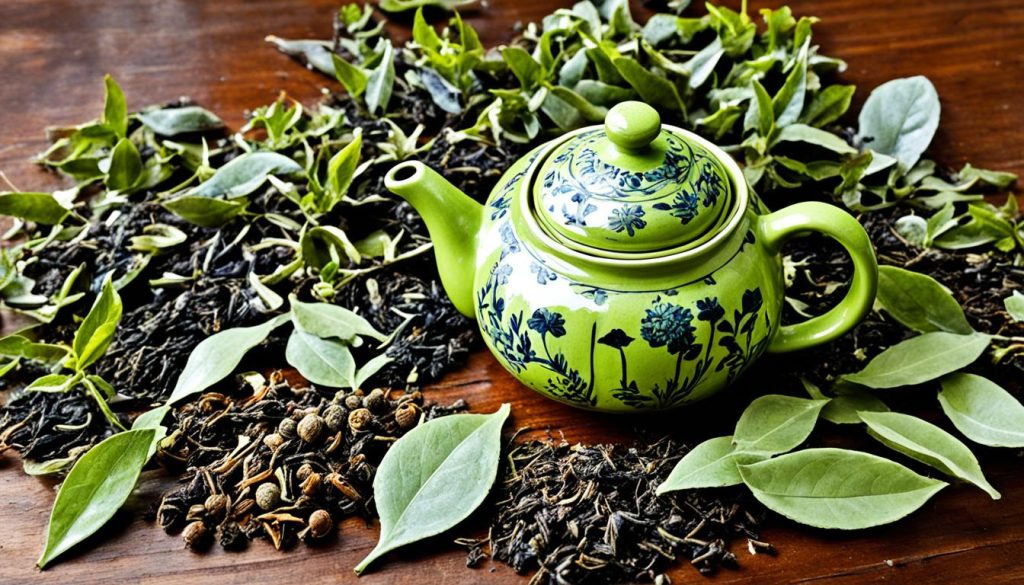
In conclusion, while stainless steel tea sets may have a minimal effect on the taste of the tea, they do not offer the same flavor-enhancing properties as ceramic or glass teapots. Ultimately, the choice of teapot material depends on your personal preferences and the kind of tea experience you seek. Experiment with different materials to find the one that perfectly complements your favorite tea varieties.
Choosing the Best Teapot Material for Tea Taste
When it comes to selecting the best teapot material for tea taste, personal preference plays a significant role. Different teapot materials can enhance the flavors and aromas of your tea in unique ways. Understanding your personal taste preferences, preferred tea variety, brewing style, and budget will help you make an informed decision.
1. What are the best teapot materials for tea taste?
The best teapot materials for tea taste include ceramic, clay, and stainless steel. Ceramic and clay teapots are known for their ability to preserve and enhance the flavors and aromas of the tea. Ceramic teapots are versatile, suitable for all types of teas, while clay teapots can enhance the taste of certain teas, like Pu-erh or Oolong. On the other hand, stainless steel teapots offer simplicity and durability, although they may have a more subtle impact on the taste.
2. How does personal preference affect the choice of teapot material?
Personal preference is crucial when choosing a teapot material. Some individuals prefer the traditional and authentic experience of brewing tea in a clay teapot, while others appreciate the elegance and versatility of a ceramic teapot. Stainless steel teapots are favored by those who prioritize durability and ease of use. Ultimately, it comes down to what brings you the most enjoyment during your tea brewing sessions.
3. Does the tea variety affect the choice of teapot material?
Yes, the type of tea you prefer can influence the choice of teapot material. Certain teas, such as delicate green or white teas, may benefit from the gentle heat retention provided by ceramic or clay teapots. Stronger teas like black or herbal teas, which can withstand higher temperatures, may produce equally enjoyable results when brewed in stainless steel teapots.
4. How does brewing style impact the selection of teapot material?
Your brewing style can also guide your choice of teapot material. If you prefer a longer steeping time, ceramic and clay teapots can better preserve the flavors over time. Alternatively, if you prefer shorter brewing sessions or multiple infusions, stainless steel teapots offer better heat retention and durability, making them suitable for this brewing style.
5. Can budget constraints influence the selection of teapot material?
Yes, budget can be a determining factor when choosing a teapot material. Ceramic and clay teapots, especially those handmade or from renowned brands, can be more expensive. On the other hand, stainless steel teapots can be more budget-friendly without compromising quality. It’s important to find a balance between your budget and the features you prioritize in a teapot.
| Teapot Material | Advantages | Disadvantages | |
|---|---|---|---|
| 1 | Ceramic | Preserves flavors and aromas, versatile for all teas | Can be fragile, higher cost for handmade or premium options |
| 2 | Clay | Enhances flavors of certain teas, like Pu-erh or Oolong | Requires careful handling, limited versatility |
| 3 | Stainless Steel | Durable, easy to clean, budget-friendly | Minimal impact on tea taste compared to ceramic or clay |
Conclusion
In conclusion, when considering the impact of teapot materials on tea taste, stainless steel tea sets may have a minimal effect on the flavor profile. While they are known for their durability and heat retention capabilities, stainless steel teapots do not offer the same flavor-enhancing properties as ceramic or clay teapots. The choice of teapot material ultimately depends on personal preference and the desired tea brewing experience.
If you are someone who appreciates the unique flavors and aromas that can be achieved with different teapot materials, experimenting with ceramic or clay teapots may be worth considering. These materials are known for preserving and enhancing the taste of tea, while also providing a more traditional tea-drinking experience.
On the other hand, if simplicity and durability are more important to you, stainless steel tea sets can still produce a satisfactory cup of tea. While the impact on taste may be minimal, they offer convenience and long-lasting quality. It’s all about finding the teapot material that suits your personal taste preferences and enhances your tea-drinking enjoyment.
